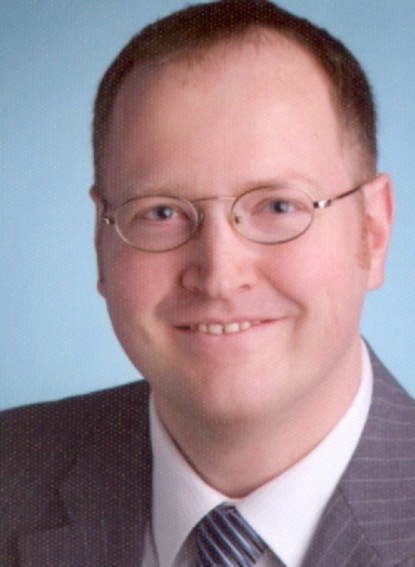For the laser-driven generation of electron beams, various cathode materials may be used. We employ GaAs cathodes: Bulk GaAs cathodes are used for production of unpolarized beams, and crystals with different layers of slightly different stoichiometry allow electron beams with degrees of polarization in excess of 90%.
We study the fundamental physical processes for the preparation of cathode materials and the production of electron bunches. Furthermore, we develop technical solutions facilitating such investigations and the reliable operation of a GaAs-based (polarized) source. The number of electrons released per incident laser photon, the so-called quantum efficiency, strongly depends on the residual gas pression and the gas composition.
GaAs cathodes exhibit limited lifetime due to the sensitivity of the CsO layer necessary for electron emission. For the generation of high-intensity polarized electron beams for ERL experiments, positron production, or future accelerators in general, a higher lifetime is essential. Lifetime-limiting effects comprise chemical reactions that corrode the CsO layer over time. Furthermore, the accelerated electrons ionize the residual gas molecules. The produced ions are accelerated back to the cathode, where they destroy the layer. A new source is being set up at the Photo-CATCH teststand, which addresses both effects. The cathode will be placed inside a cryogenic sub volume. This will improve the local vacuum due to cryogenic adsorption of residual gas on the chamber walls. In addition, an electrostatic bend will make sure that ionized gas molecules miss the cathode.
To accelerate the electrons at S-DALINAC a pulse electron beam (3 GHz time structure) is needed. For continuous beams it is necessary to use a Chopper-Prebuncher Section to cut the beam into 30 ps long electron bunches. At this point the beam looses up to 90% of its current. By using a pulsed Laser with our SPIN electron source, we can get directly pulse electron beams, without any losses. At SPIN and Photo-Catch we use two different Lasertypes:
Laser diodes, pulsed by amplification coupling, with down to few pico seconds pulse length and pulse energies in the range of 100 pJ.
Titan:Sapphire Laser, pulsed by mode-locking with a pulse length < 1ps.
The laser systems have to be stable in frequency and phase at long term experiments relating to the accelerator S-DALINAC. This is necessary for uninterruptible operation of the experiments. For maintenance during the beam time, the laser lab is autonomous and separated from the accelerator. To get the laser beam to the electron source a 40 m beam transfer though the building was implemented.
Experiments with polarized electrons at the S-DALINAC
Polarization degrees of freedom in the energy range of the S-DALINAC have hardly been studied so far. Some ideas for experiments are sketched in the following. All projects require detailed planning, simulations, and the development of data-acquisition systems.
Electron scattering gives insight into the structure of atomic nuclei. Cross sections or scattering probabilities depend on the shape, on spin and on nuclear current distributions in the nucleus. If the incident electron beam is polarized, one expects a scattering asymmetry. In the energy range of a few tens of MeV, the maximum is close to a scattering angle of 180°. Investigation is possible at the world-wide unique facility for 180° scattering.
Is so much energy transferred onto the nucleus that the deexcitation takes place through proton or neutron emeission, one expects a correlation between the direction of emission of the proton/neutron and the spin direction of the electron. This correlation is predicted to contain information about the interaction beween the residual nucleus and the evaporated nucleon.
What exactly happens in the case of nuclear fission is very complex. We know enough for operation of power plants, but the processes in the interior of the nucleus are not fully accounted for yet. We investigate fission processes triggered by real photons (partly polarized). In doing so we want to learn about the fragments produced in the fission event, what role long-lived isomers play, and how probable fission events are. With polarized photons we hope to gain access to parity violation which would be an indication for the weak interaction in nuclear structure. To achieve this goal, we want to use an active target.
At a dentist's, X-rays are produced in the deceleration of electron beams. But what if the incident electrons are polarized? Interestingly enough, this is rarely studied so far. Together with colleagues from Heidelberg and other places we work on these questions and measure the correlation between the direction of bremsstrahlung polarization depending on the direction of polarization of the incident electron beam.
Supported by DFG within SFB 634 and by the State of Hesse through the LOEWE Center HIC for FAIR.
A successful establishment of the new ERL mode currently under development at S-DALINAC requires an improved beam quality of the injector, especially in regard to bunch length and energy spread. Furthermore, to re-enable an usage of the spin-polarized photo-gun, the low-energy acceptance has to be expanded. To address these issues, the first superconducting injector cavity will be replaced by a beta-adapted capture structure in order to improve the acceleration of electrons from the normal-conducting low-energy transport section. The project focuses on the technical implementation of the upgrade, including cavity manufacturing, modifications of the cryomodule, testing, installation and commissioning of the structure. Additionally, a new diagnostics beamline was installed upstream of the capture cavity. This setup allows for an detailed characterization of the bunches entering the superconducting injector, which supports refined beam dynamics simulations and a reliable setup of the machine.
The project is in the final phase before completion, with the cavity ready for installation and the diagnostics line commissioned. First beam in the upgraded injector is expected in spring 2021.






